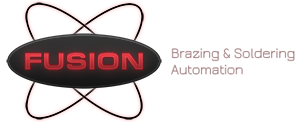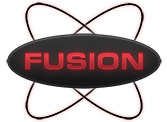“Fluxless” Binder systems are primarily utilized in a variety of brazing furnace operations, however, they also can be tested in select flame or induction systems depending on the application. Some applications where a fluxless system may be implemented include: atmospheric furnace, vacuum furnace, open air when paired with a self-fluxing phos-copper alloy for use on copper base metal, flame when used with gas flux, or in a special induction machine containing an atmospheric chamber.
|
Binder System |
Description |
Common Filler Metal |
Typical Furnace Conditions |
| CAP CKG | CAP and CKG stay in place through heating cycle and are considered quick drying. CAP pastes tend to be less viscous and have higher dispensing flow rates than its thicker sister, CKG. CKG is extremely quick drying, often making it more ideal for vacuum applications. Both stay in place once applied. | Coppers, Nickels, Silvers, Golds | High Hydrogen or Vacuum Furnace applications with low dew points. Recommend for dew points < 0°F but certain alloys require < -30°F |
| CNG CNT | CNG and CNT have similarities to CAP and CKG above. They are quick drying and tend to stay in place through heating cycle. CNG pastes tend to be less viscous and have higher dispensing flow rates, whereas CNT is typically faster drying and often used more commonly in vacuum applications. | Coppers, Nickels, Silvers, Golds | High Hydrogen or Vacuum Furnace applications with low dew points. Recommend for dew points < 20°F but certain alloys prefer < 0°F |
| CCR BAZ GAL | This binder family has a wide range of viscosities and dispensing properties. CCR tends to have the most flow and is easily dispensed through squeeze bottles. GAL has the least flow, most body, and is most viscous. | Coppers and Brass Fillers | High Hydrogen or Vacuum Furnace applications with low dew points. Recommend for dew points < 0°F but certain alloys require < -30°F |
| EXO | Unlike typical aqueous systems, EXO is specifcally formulated for improved performance in Exothermic and Endothermic applications. It has little to no residue under those conditions, however, it is not recommended in High Hydrogen or Vacuum applications. This fast drying product is easily dispensed through both squeeze bottles and air applicators. | Coppers | Exothermic, Endothermic, and Rich Endothermic applications which tend to have higher dew points (between 0° – 60°F) |
| CBL CBC | Non-drying, neutral binder systems with great versatility. Very sticky and adhesive in nature, these materials are ideal form vertical joints requiring minimal flow and slump properties. They have versatility in a variety of atmospheric environments, and are less reliant on dew points than some other binders. Adhesive nature often results in an oily off-gas, so they are more heating profle dependent to minimize residue build-up on equipment. | Coppers, Phos-Coppers, Silvers, and Golds | Exothermic, Endothermic, and Rich Endothermic, High Hydrogen furnace applications. Not typically recommended for Vacuum |
| PNP PLA | Formulated to have excellent chain scission during decomposition, PNP and PLA have extremely low residue in a variety of lower temperature furnace applications. They have the ability for high alloy loading and are an excellent choice for vacuum applications, however, their unique formulation leads to pronounced slump, so their use is not recommended for vertical or complex joint designs. | Silvers, Golds, Phos-Coppers | Excellent in Vacuum applications for Silver and Gold fillers but can be used in all furnace conditions including higher dew points. |
| CP CFW | CP and CFW are optimized for lower temperature silver and phos-copper alloys. Like PNP and PLA, they have a good residue profiles in lower temperature furnace applications. CP can offer extremely high alloy loadings (i.e. 87-90%), however, it does have more pronounced slump, similar to PNP and PLA. Not recommended for vertical or complex joint designs. CFW is formulated to provide improved adhesion over CP. This limits CFW’s loading closer to 80% alloy. Not as adhesive in nature as the CBL or CBC family of products. | Silvers, Phos-Coppers | Recommended low dew, High Hydrogen furnace applications. Possible for Exothermic, Endothermic, and Vacuum applications, but will be filler metal dependent. |
| CDW | CDW is a hybrid system with excellent versatility in all environmental atmospheres ranging from vacuum furnace to higher dew point exothermic atmospheres. Semi-drying on the part with excellent part adhesion similar to the CBL/CBC family with improved hot and cold slump throughout the staging and brazing cycle times. Has superior snap off / break similar to an aqueous system (i.e. less stringy than CBL/CBC family). | Copper | Versatile in all furnace applications: Exothermic, Endothermic, and Rich Endothermic, High Hydrogen furnace applications, and Vacuum furnaces. |
| CTT | CTT is formulated to have minimal residue in all environmental atmospheres, ranging from vacuum furnace to higher dew point exothermic atmospheres. CTT is non-drying and an excellent choice for roll coat or stencil applications. Excellent part adhesion with little to no hot and cold slump throughout the staging and brazing cycle times. Unique chemistry typically permits higher alloy loading. Pastes have superior snap off / break similar to an aqueous system (i.e. less stringy than CBL/CBC family). | Coppers, Phos-Coppers, Nickels | Versatile in all furnace applications: Exothermic, Endothermic, and Rich Endothermic, High Hydrogen furnace applications, and Vacuum furnaces. |
For more details on the above products, download our Paste Brazing Brazing & Soldering Alloys brochure.
USA: (440) 946-3300
EUROPE: +44 (0) 1279 443 122
Find Your Fusion Rep: USA | AMERICAS | EUROPE | ASIA-PACIFIC
Fusion Equipment in Action: Applications & Videos >>


